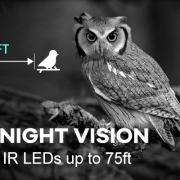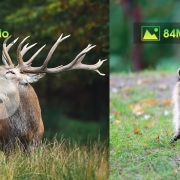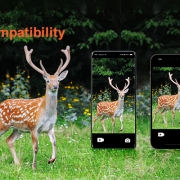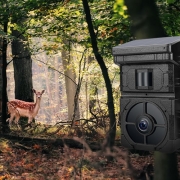Understanding PIR Imaging in Hunting Cameras: How It Works
What Is PIR Imaging in Hunting Cameras?
PIR, or Passive Infrared, imaging is a core feature in modern hunting cameras. It enables the camera to detect motion based on heat signatures, primarily from animals or humans, making it an essential technology for wildlife monitoring, game scouting, and security applications.
Unlike traditional motion detection, PIR sensors pick up infrared radiation emitted by warm-bodied creatures. This means they don’t rely on visible movement but instead respond to changes in thermal energy in their detection zone.
How Does PIR Imaging Work?
PIR sensors operate by detecting changes in infrared radiation within a specific field of view. Here’s a simplified breakdown:
-
Heat Detection: Every object emits infrared radiation. Warm-blooded animals like deer or boars emit more than their surroundings, especially in cooler environments.
-
Sensor Activation: When an animal moves into the PIR sensor’s range (often 80–110 degrees), it creates a sudden change in temperature in the monitored area.
-
Image/Video Capture: This thermal change triggers the camera to take a photo or start recording video, capturing wildlife activity without manual intervention.
Advantages of PIR Imaging in Hunting Cameras
-
Energy Efficiency
PIR sensors consume very little power. This allows hunting cameras to stay in standby mode for months, conserving battery life until motion is detected. -
Accurate Motion Detection
Since PIR detects body heat, it reduces false alarms caused by moving branches or wind-blown debris that don’t emit heat. -
Stealth Operation
PIR sensors are silent and non-intrusive, making them ideal for capturing natural animal behavior without disturbance. -
Night Vision Compatibility
PIR systems work seamlessly with IR LEDs, enabling effective detection and recording in low-light or complete darkness.
Disadvantages of PIR Imaging in Hunting Cameras
-
Limited Detection Range
Most PIR sensors have a range of 10–20 meters. Beyond this, the camera may not detect movement effectively, especially for smaller animals. -
Temperature Sensitivity
In hot climates or warm daytime conditions, the temperature difference between animals and the environment decreases, reducing detection accuracy. -
Angle and Placement Limitations
PIR detection works best when movement is lateral (side-to-side) rather than directly toward the camera. Improper positioning may result in missed triggers. -
False Triggers in Some Conditions
Although reduced, false triggers can still happen—especially when sudden heat sources like sunlight reflections or vehicles come into view.
Best Practices for Using PIR Hunting Cameras
-
Optimal Placement: Position the camera to capture lateral movement at animal height, avoiding direct sunlight and reflective surfaces.
-
Proper Sensitivity Settings: Adjust PIR sensitivity based on the environment. Use higher sensitivity in cooler seasons and lower in hot weather.
-
Use High-Quality Sensors: Choose hunting cameras with advanced PIR systems and wide-angle lenses for better coverage and accuracy.
Conclusion
PIR imaging technology is a powerful tool in modern hunting cameras. It combines stealth, energy efficiency, and effective motion detection to deliver reliable wildlife monitoring. While it has some limitations—especially in extreme temperatures or long-range detection—it remains the gold standard for game tracking and nature observation.
When choosing a trail camera, understanding the PIR sensor’s range, sensitivity, and how it integrates with night vision features can significantly improve your outdoor monitoring experience.












